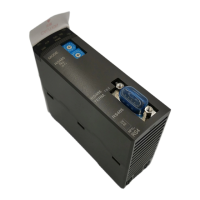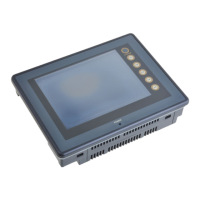1-57
Section 1 Specications
1-7-4 Example of event task operation
An example of operation of an event task is explained below.
<Operating conditions>
Task priority: Task 0 > Task 1 > Default task (cyclic)
Task type: Task 0: Event task
Task 1: Fixed cycle task (1ms cycle)
Default task
<Task operation>
Notes:
For event task, the timing of its start depends on the number of specied event addresses. Above example shows the
operation when special event addresses that use “interrupt input” and “high-speed counter match interrupt” as event addresses
are specied.
When input address or the like that is not special event address is specied as event address, the event task is started when
the next “xed cycle interrupt by system” occurs after the event occurred.
Checking task execution time and execution cycle
You can check the task execution time and cyclr on the resource information screen that can be displayed from
the control dialog of D300win.
Task execution time: The time after input to the task starts until output from the task has been nished.
Task execution cycle: The time after input to the task starts until input to the next task starts.
The task execution cycle is displayed after the resource information screen is opened and then the task is
executed twice.
An event
occurs.
Fixed cycle interrupt by system
Start request
Task 0
Task 1
Default
Interrupt
Interrupt
Interrupt Interrupt
(Note)
Interrupt Interrupt Interrupt Interrupt
: Scan end processing
: Expansion right side unit Data output processing
: User program processing
: Main unit Data input processing
: Expansion right side unit Data input processing
: Main unit Data output processing

